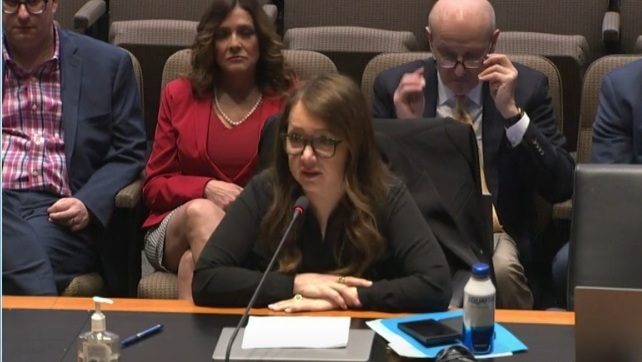
Is private equity doing enough on climate change?
Private equity firms are making 'clear and significant’ progress on implementing ESG reporting, thanks in part to investor pressure, but more clarity is needed from regulators.
Private equity (PE) firms have, historically, lagged other areas of the investment industry when it comes to addressing climate change and incorporating effective environmental, social and governance (ESG) policies.
But with investors and stakeholders demanding more from the companies in which they invest when it comes to climate change reporting, private equity is under pressure to catch up.
Finding a balance
Clara Cibrario, an associate at global law firm Cleary Gottlieb, says PE firms often find themselves at the “crossroads of the ESG culture war”, given that they have to balance sustainability considerations with their fiduciary duties as asset managers.
“So, they increasingly face potential challenges on both fronts, from investors with different priorities. Balancing the two is often risky,” she adds.
Cibrario acknowledges that, while many PE firms have been relatively quick to incorporate climate risk analysis into their investment screening processes, now investors are demanding more information and reporting on “impacts”.
“Negative environmental impacts are not incorporated in most ESG rating methodologies/indices – which tend to focus on ESG-related financial risk – and data on emissions is often difficult to obtain,” she explains.
“Even once a PE firm has emissions data on the companies/assets it invests in, it will then need peer data to benchmark its investments against the rest of the market – only then can they measure the investment’s real sustainability.”
In considering whether there is a data issue for PE firms, meaning they are unable to get emission information from smaller investee companies, Peter Dunn, senior associate in the corporate team at UK law firm Burges Salmon, believes there are limitations.
“Most smaller investee companies should be able to measure their Scope 1 and 2 emissions because these arise from their direct operations,” he explains.
“Measuring Scope 3 emissions across a company’s broader value chain is more of a challenge – even for larger companies.
“Nevertheless, there is a growing recognition among general partners that their portfolio companies need to be collating and reporting such information, not least because this is increasingly a prerequisite both for securing debt finance and achieving a successful exit.”
Negative environmental impacts are not incorporated in most ESG rating methodologies/indices – which tend to focus on ESG-related financial risk – and data on emissions is often difficult to obtain.
European PE ‘leading the way’
Recent research published by LGT Capital Partners suggests that the tide is turning though, and that private equity is beginning to improve its ESG reporting capabilities.
In its tenth annual ESG Report, LGT Capital Partners found that 47% of private equity managers are now addressing climate change through their ESG policies – an increase of 13 percentage points over the past year.
Unsurprisingly, given the pace and reach of ESG and climate change regulation in Europe, PE managers in this region are leading the way.
The study of 392 managers globally showed that when it comes to ESG integration, 84% of European private equity managers assessed were ranked “excellent” or “good” for their approaches. This compared to 70% in Asia and 50% of US managers.
Over the past five years, however, it is Asia that has shown the strongest improvement in ESG integration, according to LGT Capital Partners, with an increase of 20 percentage points in the number of managers ranked “excellent” or “good”.
Meanwhile, 50% of European private equity managers have implemented an approach to climate change, as have 40% of managers in Asia.
Tycho Sneyers, a managing partner at LGT Capital Partners and a board member of the UN PRI, observes that over the past 20 years, since it began analysing ESG activities, there has been “clear and significant progress” in how managers approach ESG issues.
“This is reflected in areas such as climate change, D&I, and the continued trend towards outcome-oriented approaches, where we see managers integrating ESG aspects into their activities,” Sneyers adds.
The key requirement is the introduction of standardised corporate ESG reporting to replace the current alphabet soup of competing reporting frameworks, which makes comparisons between companies very difficult.
'Alphabet soup’
Despite the research showing PE firms moving in the right direction, there is clearly no time for complacency.
Asked whether institutional investors and asset owners are placing pressure on PE firms on climate change, Cleary Gottlieb’s Cibrario says that asset owners are also still developing “capacity and sensibility for assessing climate impacts”.
“What we see a lot of is investors’ own ESG policies being annexed to investment agreements, although they are usually just acknowledged by fund managers – ie they don’t tend to become binding on the fund’s investment decisions.
“We also start to see investors negotiate periodic reporting or information rights on ESG matters, typically emissions. This is true even for the bigger landmark climate funds we have worked on,” she says.
“So, really, the prevailing sense is that – behind all the vitriolic talks or the ‘green’ press releases – everyone is still developing capacity to assess ESG and gather reliable ESG data at this time.”
For Dunn, when it comes to continuing to encourage PE firms to apply a greater focus on climate change, there is a role for the regulator.
“The key requirement is the introduction of standardised corporate ESG reporting to replace the current alphabet soup of competing reporting frameworks, which makes comparisons between companies very difficult,” he says.
“The mandating of a single sustainability reporting framework – such as the framework being developed by the International Sustainability Standards Board – would be transformational.”
The market, and investors, need more clarity, adds Cibrario.
“And internationally, we need more alignment because most large funds raise capital in parallel in different jurisdictions.”



